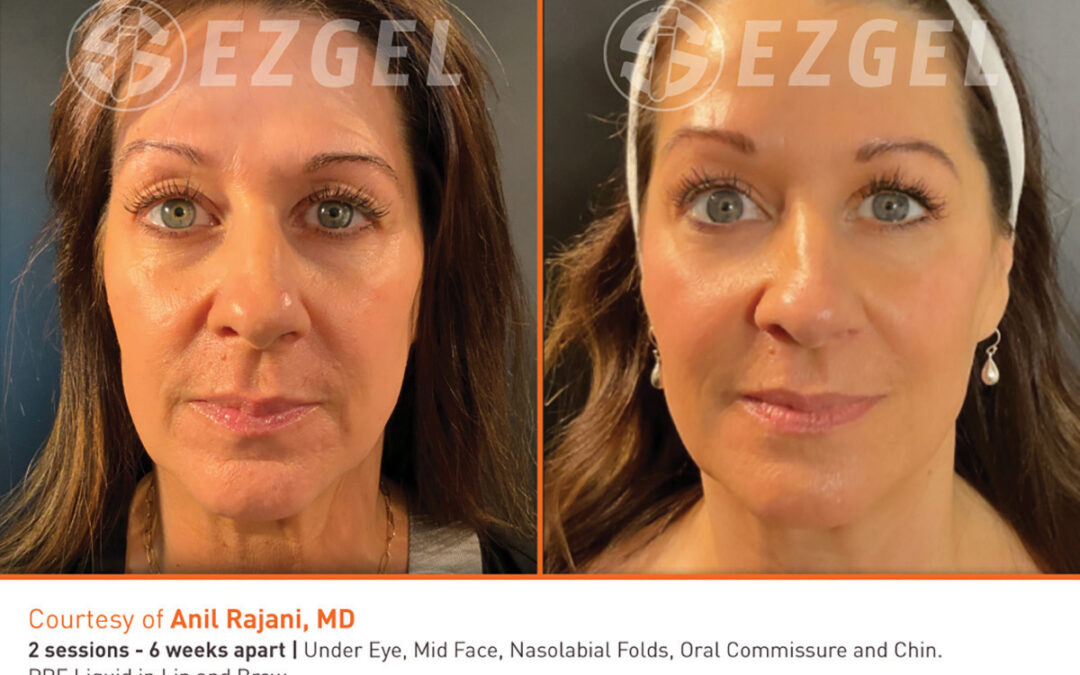Statistics reveal that 85 to 90 percent of women have cellulite! That’s why it is talked about so frequently. That’s why every summer women cringe at the thought of wearing shorts and swimsuits. That’s why beauty product research facilities around the world are searching for a remedy. And that’s why women of all ages are looking for a magic way to treat their problem areas. So let’s review what cellulite really is and how it occurs. Yes, it is fat. However, it looks different and acts differently than other types of fat. For one thing, it has that rather unsightly (ugly) appearance. Then there are the limited areas as to where it is located — around the thighs, hips and buttocks. In its mild form, the skin might only look “cheesy’ when it is pinched. In a more severe case, the mountains and valleys are plainly in sight. The reason cellulite is more often found in women than in men is because, lucky us, much of our fat is naturally stored in — ta da — the thighs, the hips and the buttocks. Fibrous “bands” are contained under the skin. Here’s another place where a big difference occurs between men and women. In men, the “bands” are in even rows, while in women, the “bands” are in a zigzag pattern. This phenomenon allows the fat to “push through” the connective tissue that keeps it distributed evenly, thus causing the bumpy, lumpy, clumpy peaks and valleys called cellulite.
Genetics also plays a role in cellulite tendencies. Of course, excess weight just adds more fat and compounds the cellulite problem. Oh yes, hormones (estrogen) also play a major role because nature determined that women’s bodies should store fat to meet the needs required by motherhood.
What kinds of treatments are available?
Diet. Many women who are of normal weight or even more svelte or who have lost weight still have cellulite. So it appears nature has played a little joke on us. And it appears diet alone is not the answer. Exercise. Well, you can try. One expert suggests using repetitive, low-weight exercises on the leg. Use free weights of 5 to 10 pounds. Include some cardio exercise as well to help burn fat. Combination of diet and exercise. Some fitness experts agree a combination of reducing calorie intake and performing regular strength training along with cardio exercises can bring about an improvement in the appearance of cellulite. One study had women exercising 25 minutes plus 25 minutes for endurance (jogging, cycling) three days per week for eight weeks. They lost fat and increased muscle. The reason: When the underlying muscle is strengthened, fat lies smooth instead of crinkly. Those who also ate fewer calories lost more weight (8 pounds to 1.5 pounds) AND more fat (9 pounds to 3 pounds).
Thermage. This treatment uses radio frequency waves, which pass through the skin to create heat. The heat tightens the fibrous connective bands — the cause of the rippled appearance in the skin. This procedure takes about one and one-half hours. A handheld device is placed on the skin in a grid pattern. This is repeated many times on the area being treated. Although one procedure is usually all that is required, sometimes it takes a couple of months to see results. The treatment costs around $2,000 or more and is estimated to last up to 20 months or so.
Liposuction. The consensus appears to be that although having fat vacuumed out may change the shape of an area or areas, it probably won’t take away the appearance of cellulite.
Creams, etc. Almost all sources opined, “Don’t waste your time and money.” There are no magic pills or creams. Another source recommended the use of over-the-counter retinoid creams in conjunction with cellulite creams. One source indicated creams containing caffeine may cause temporary improvement in the appearance of cellulite.
Combination using lasers, lights, vacuum and massage. SmoothShapes combines light energy and dynamic laser light and some mechanical methods. The laser liquefies the fat. The light increases the penetration of the cell membrane to stimulate the production of collagen (the main protein in connective tissue). Suction ensures light penetration to the tissue. Then rollers are used to gently massage the skin surfaces and help move the liquefied fats from the area of treatment into the body’s lymphatic system for drainage.
Treatments two times per week for four weeks at a cost of $125 or more per treatment are expected to last one to two years, assuming all other factors — diet, exercise — remain the same.
Yoga. As fabulous as yoga is for the body, it probably won’t work well in this instance since it doesn’t burn a lot of calories.
Body wraps. No matter what a spa might claim, physicians say body wraps won’t take away the dimpled cellulite skin. Your skin might appear better initially, but that only lasts for a day or two. Body wraps do not suck out fat.
Lipodissolve (lipotherapy, injection lipolysis). Lipodissolve treatment is a series of injections of medications that are said to melt localized fat deposits. These treatments are not approved by the FDA. In one study, patients did have a very slight reduction of fat after four treatments. However, one liposuction treatment could have accomplished as much. Side effects included swelling, redness, bruising and pain. The melted fat doesn’t leave the body, but migrates to other areas of the body’s fat cells (and arteries). Lipodissolve could be used to treat small areas of fat, such as under the chin, and for touching up after liposuction.
VelaShape™ Cellulite Reduction and Body Contouring Treatment at American Laser Centers. The only FDA-approved, painless (maybe a little bruising), non-invasive treatment for cellulite reduction and body contouring. This is a combination of four treatment items: infrared light, radiofrequency energy, vacuum-pulsed negative pressure and specially designed rollers that smooth out the skin’s surface periodically during the treatments. You may see results after four to six treatments.
Foods, drinks and supplements
There are a few things you can eat and drink and a few supplements that can help with your cellulite problem.
Hydrate your body and skin. Drink lots of water! This is nothing newsy for any of us. Notice the emphasis is on water, not sugary drinks and milkshakes. Even juices should contain mostly water if they’re used throughout the day for hydration.
There are drinks on the market claiming to contain various vitamins and/or herbs, amino acids or botanicals furnishing antioxidants. Experts suggest we get our antioxidants in our regular meals and foods, but supplementing could be acceptable as well. The theory is that anything that hydrates you, without added sugars (no more than 15 grams) or other fattening ingredients, could be called a “beauty” drink. After all, the skin is the largest organ we have. The skin plus the fat beneath it comprise over 80 percent of the body. And this is where the blood flows as well. Additionally, the vitamins in the drinks or in powder or liquid forms might be absorbed by the body. Drink examples include Crystal Light Skin Essentials, Beauty Scoop, etc. Also keep in mind the costs of these vitamin and beauty drinks and powders can add up, from $1 to $4 or more per serving. Bottom line: These drinks should supplement water intake, not replace it.
Green and black teas are healthy as hydrators but also fight cancer and sun damage. Drink at least two cups daily. Other do-it-yourself “beauty drinks” are fruity teas with club soda on ice and lemon added to your water.
Foods containing a lot of water include apples, grapes, cucumbers, watermelons and oranges. Veggies with lots of color — greens, oranges, yellows — contain Vitamin C, which helps prevent collagen from breaking down. Collagen supports the strands of fibrous tissue. If these strands become weak, skin loses its elasticity and that allows … wait for it … fat to pop up and bulge. BTW, excessive sun also causes collagen to break down. In addition, Vitamin C also helps you lose more fat while exercising.
Stick with healthy whole grains like brown rice, oatmeal, wheat/multi-grain breads and popcorn. Why? Because refined grains like white bread and white rice are quickly converted into blood sugar, which makes your insulin rise fast, signaling the body to store fat. The now fuller fat cells then push through the connective tissue and give the lumpy look of cellulite.
Fish oil supplements with omega-3 fatty acids help hydrate the skin. And they help block the release of enzymes caused by UVA rays that eat away at collagen.
New treatments for cellulite currently under study include cryolipolysis, which involves chilling the fat to just above freezing, causing the fat to be reabsorbed into the body. Another study uses Viagra … yes, that Viagra. The outcome expected is that Viagra will be a catalyst to burn the fat associated with cellulite.
Finally, let’s remember to drink that daily glass of red wine. It may not help your cellulite, but it does have antioxidants. Close enough.









0 Comments